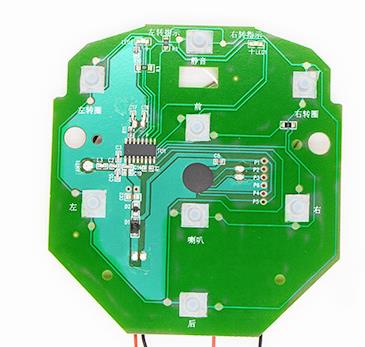In the PCB design stage, the following six things need to be considered when selecting component packaging. All the examples in this article were developed using the Multisim design environment, but the same concepts still apply even with different EDA tools.
1. Consider the choice of component packaging
In the entire schematic drawing stage, you should consider the component packaging and land pattern decisions that need to be made in the layout stage. Some suggestions to consider when selecting components based on component packaging are given below.
Remember, the package includes the electrical pad connections and mechanical dimensions (X, Y, and Z) of the component, that is, the shape of the component body and the pins that connect to the PCB. When selecting components, you need to consider any mounting or packaging restrictions that may exist on the top and bottom layers of the final PCB. Some components (such as polar capacitors) may have high headroom restrictions, which need to be considered in the component selection process.

If there is no ready-made package in the database, a custom package is usually created in the tool.
2. Use a good grounding method
Ensure that the design has sufficient bypass capacitors and ground planes. When using an integrated circuit, make sure to use a suitable decoupling capacitor near the power terminal to the ground (preferably a ground plane). The appropriate capacity of the capacitor depends on the specific application, capacitor technology and operating frequency. When the bypass capacitor is placed between the power and ground pins and placed close to the correct IC pin, the electromagnetic compatibility and susceptibility of the circuit can be optimized.
3. Allocate virtual component packages
Print a bill of materials (BOM) for checking virtual components. Virtual components have no associated packaging and will not be transferred to the layout stage. Create a bill of materials, and then view all the virtual components in the design. The only items should be power and ground signals, because they are considered virtual components, which are only processed in the schematic environment and will not be transmitted to the layout design. Unless used for simulation purposes, the components displayed in the virtual part should be replaced with encapsulated components.
4. Make sure to have complete bill of materials data
Check whether there is sufficient data in the bill of materials report. After creating the bill of materials report, it is necessary to carefully check and complete the incomplete device, supplier or manufacturer information in all component entries.
5. Sort according to component label
To facilitate the sorting and viewing of the bill of materials, make sure that the component numbers are consecutively numbered.
6. Check for redundant gate circuits
Generally speaking, the inputs of all redundant gates should have signal connections to avoid dangling the input terminals. Make sure you have checked all redundant or missing gate circuits, and all unwired input terminals are fully connected. In some cases, if the input terminal is suspended, the entire system cannot work correctly. Take the dual op amp that is often used in the design. If only one of the op amps is used in the dual op amp IC components, it is recommended to either use the other op amp, or ground the input of the unused op amp, and deploy a suitable unity gain (or other gain) ) Feedback network to ensure that the entire component can work normally.
In some cases, ICs with floating pins may not work properly within the specification range. Usually only when the IC device or other gates in the same device are not working in a saturated state, the input or output is close to or in the component power rail, the IC can meet the index requirements when it works. Simulation usually cannot capture this situation, because the simulation model generally does not connect multiple parts of the IC together to model the floating connection effect.
The above is an introduction to the six techniques of component selection in PCB circuit board design.